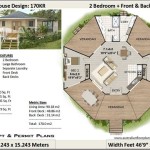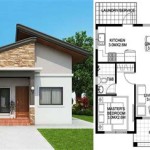House Building Plan: Everything You Need To Know Before You Get Started
Building a house is a significant investment, both financially and emotionally. It's a complex process that requires careful planning and execution to ensure a successful outcome. From choosing the right location to selecting materials and managing contractors, there are numerous factors to consider. This article provides a comprehensive guide to help you navigate the house building process effectively, covering essential aspects from the initial planning stages to the completion of your dream home.
1. Define Your Vision and Requirements
The first step in building a house is to clearly define your vision and requirements. This involves understanding your lifestyle, needs, and preferences. Consider the following questions:
- How many bedrooms and bathrooms do you need?
- Do you need a home office or dedicated space for hobbies?
- What type of kitchen and living areas are essential?
- What are your preferences for outdoor living spaces?
- Do you have any specific architectural styles in mind?
- What is your budget for the project?
Once you have a clear vision, you can start to develop a detailed plan that outlines the key features and specifications of your future home. This plan will serve as a blueprint for the construction process, ensuring that your vision is realized.
2. Choose the Right Location and Evaluate the Land
Choosing the right location is crucial for house building. Consider factors like proximity to amenities, transportation, schools, and work. Research the neighborhood's reputation, crime rates, and community amenities. Once you've chosen a location, ensure you conduct a thorough evaluation of the land. This includes:
- Soil testing to evaluate its suitability for foundations.
- Assessing the terrain for potential site preparation needs.
- Checking for utilities like water, sewer, electricity, and gas.
- Evaluating the presence of any environmental hazards like flooding or radon.
Understanding the land's limitations and potential challenges will help you plan the construction process efficiently and avoid unexpected costs or delays.
3. Design and Planning: Working with Architects and Engineers
With a defined vision and chosen location, it's time to engage professionals to translate your dream into a tangible plan. Architects and engineers play critical roles:
- Architects create the architectural design, focusing on aesthetic appeal, functionality, and compliance with local building codes. They work with you to develop floor plans, elevation drawings, and perspectives.
- Engineers are responsible for structural integrity and ensuring the house meets safety standards. They might specialize in civil, structural, or mechanical engineering, depending on the project's needs.
Collaborating with these professionals early in the process allows for open communication, iterative design, and early identification of potential challenges. Their expertise ensures that your house is both beautiful and structurally sound.
4. Financing and Budgeting Considerations
Building a house is a substantial financial commitment. Carefully consider the following aspects:
- Determine your budget: Establish a realistic budget, considering the cost of land, construction, materials, permits, and potential contingencies.
- Explore financing options: Get pre-approved for a construction loan from a reputable lender to ensure you have access to the funds needed throughout the project.
- Develop a detailed cost breakdown: Work with your architect, engineer, and contractors to create a detailed budget that outlines every cost associated with the project. Factor in inflation and unexpected expenses.
Having a clear financial plan will prevent financial strain during the building process and mitigate the risk of cost overruns. Regular financial monitoring and communication with your lender are essential for maintaining financial stability.
5. Construction Process and Contractor Selection
Once the design and financing are in place, the construction process begins. This involves finding reliable contractors who can deliver on your vision. Research and interview potential contractors, reviewing their experience, portfolio, and references. Consider:
- General contractor: Responsible for overseeing the entire project, managing subcontractors, and ensuring timely completion.
- Subcontractors: Specialists in various trades, such as plumbing, electrical, roofing, and HVAC.
Clearly define the scope of work, payment terms, and timelines in written contracts. Regular communication, site visits, and transparent progress updates are crucial for a successful construction process. Ensure all work is done according to building codes and safety regulations.
6. Materials and Finishes: Selecting the Right Options
The materials and finishes you choose for your house have a significant impact on its aesthetics, functionality, and durability. Consider the following:
- Structural materials: Choose high-quality materials for foundations, walls, and roof construction to ensure structural integrity and longevity.
- Interior finishes: Make informed decisions about flooring, countertops, cabinetry, and fixtures based on durability, aesthetics, and budget.
- Exterior finishes: Select paints, siding, and roofing materials that complement the architectural style and withstand local weather conditions.
Explore various options, consider sustainability factors, and get samples to visualize the final result before making final decisions. Remember, the choices you make now will impact the house's appearance and functionality for years to come.
7. Inspections and Permits: Ensuring Compliance
Building codes and regulations are in place to ensure safety and quality. Throughout the construction process, various inspections are required to ensure compliance. This includes:
- Foundation inspections: To verify that the foundation is properly constructed and meets safety standards.
- Framing inspections: To check the structural integrity of the walls and roof.
- Electrical and plumbing inspections: To ensure proper installation and adherence to safety regulations.
Obtaining necessary permits is essential for legal construction. Work with your contractor to ensure all permits are filed, fees are paid, and inspections are scheduled timely. Compliance with regulations minimizes potential legal issues and ensures a safe and functional home.
8. Moving In and Post-Construction Considerations
Once construction is complete, you'll need to arrange for final inspections, secure a Certificate of Occupancy, and move in. Consider the following post-construction tasks:
- Landscaping: Enhance the curb appeal and create functional outdoor spaces.
- Interior design: Decorate and personalize your home to reflect your style and needs.
- Home maintenance: Establish a routine maintenance plan to preserve your home's value and ensure its longevity.
Building a house is an exciting journey. By following these steps and working closely with professionals, you can ensure a smooth and successful construction process. Remember, communication, organization, and a proactive approach are key to achieving your dream home.

8 Basics To Consider For House Design Monster Plans
Everything You Need To Know About Home Plans Homeshelf News

12 Important Things To Consider When Designing A House

How To Properly Read Floor Plans And What Details Look For

New House Plan Checklist Expert Tips Ibuildnew

What Makes A House Plan Affordable

An Architect Tells Us How To Read Floor Plans

Everything You Need To Know About 3d Floor Plans

All You Need To Know About House Plans Homify

Design Your Own House Floor Plans Roomsketcher
Related Posts








